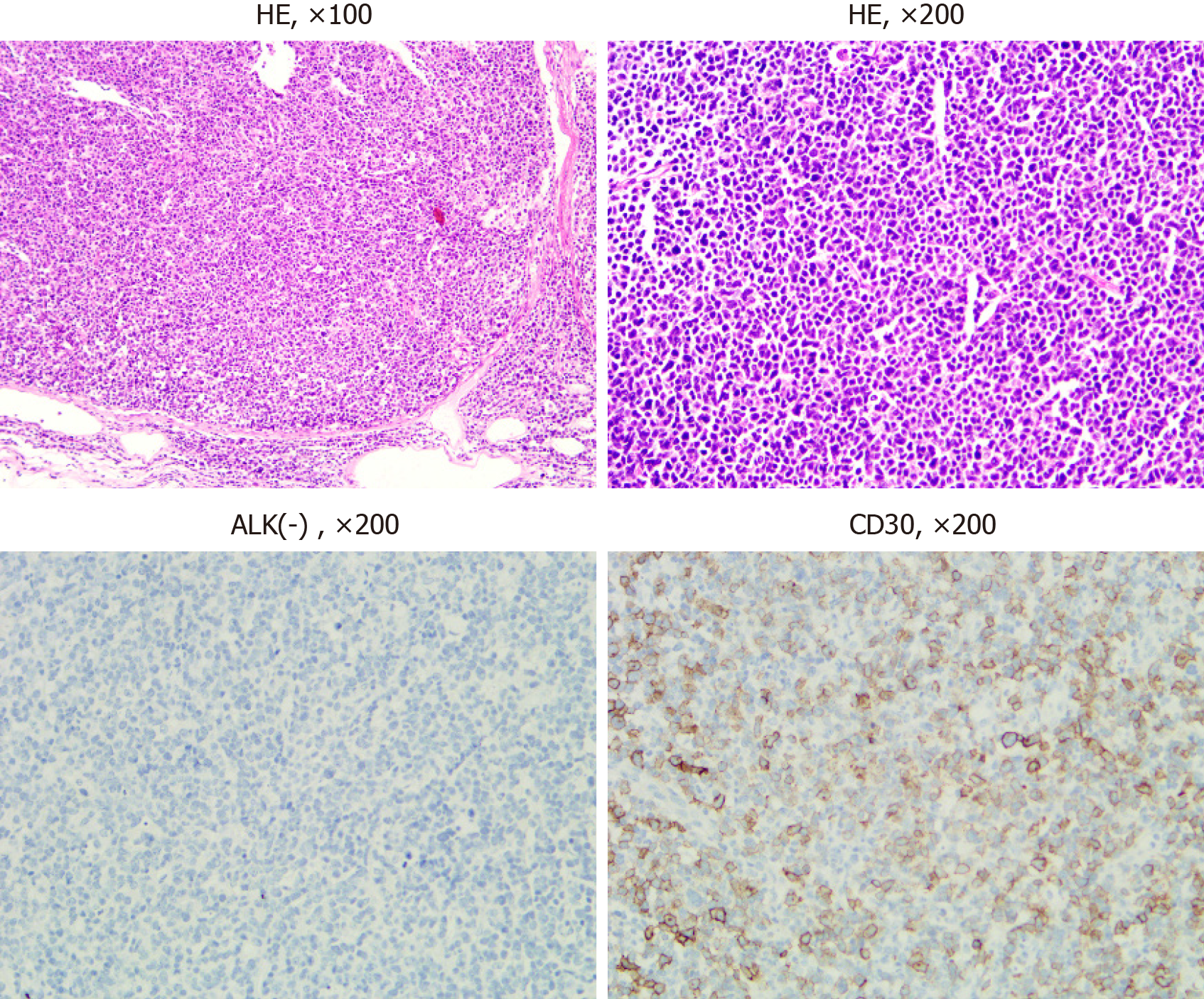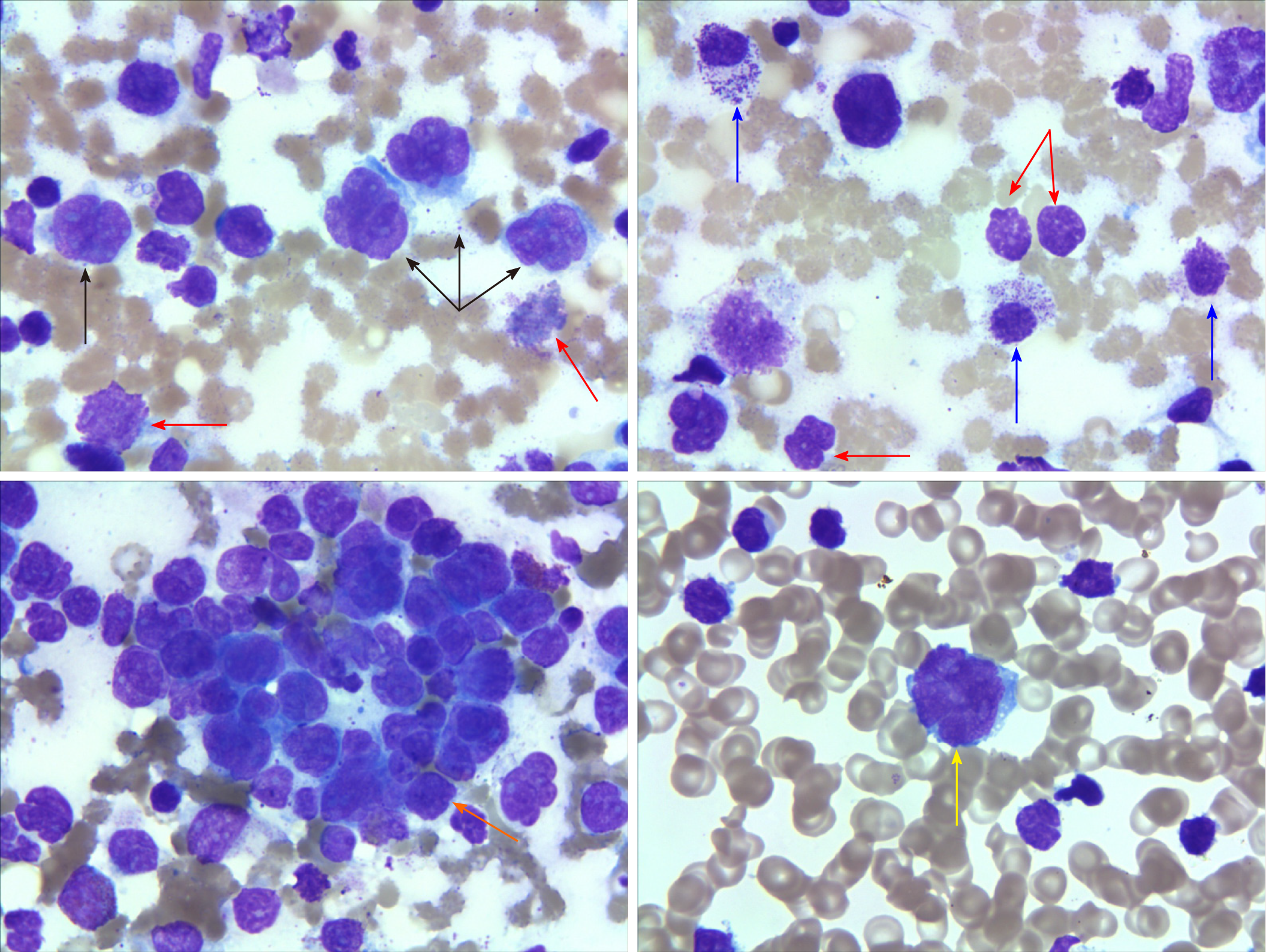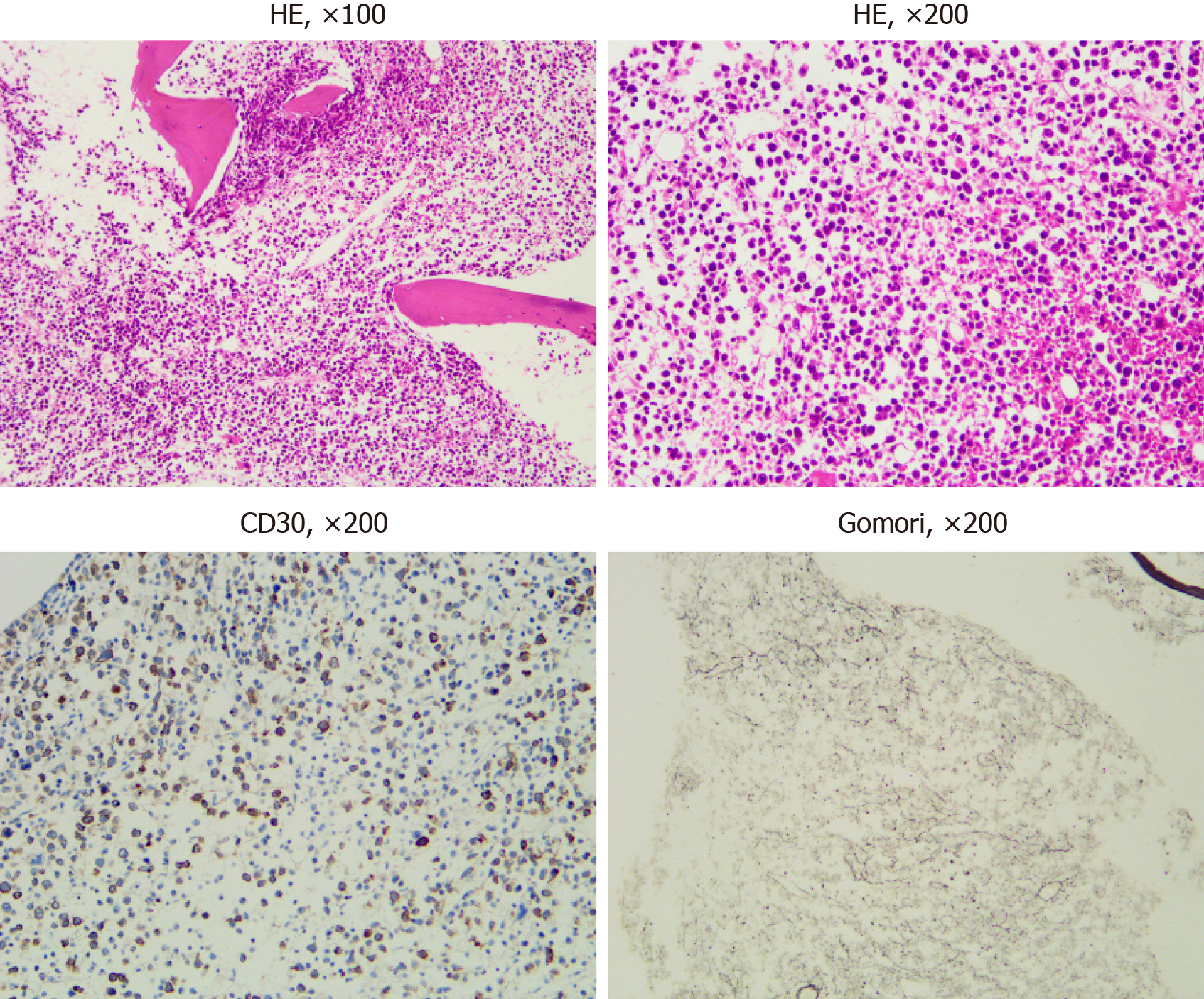Copyright
©The Author(s) 2020.
World J Clin Cases. Nov 6, 2020; 8(21): 5439-5445
Published online Nov 6, 2020. doi: 10.12998/wjcc.v8.i21.5439
Published online Nov 6, 2020. doi: 10.12998/wjcc.v8.i21.5439
Figure 1 Hematoxylin and eosin staining and immunohistochemical staining results.
The lymphoma cells showed pleomorphic large cell proliferation gathering in the lymph node sinus under hematoxylin and eosin staining at low magnification (× 100). At high magnification (× 200), the cells were gray blue, rich in cytoplasm, pleomorphic nuclei, and obvious nucleoli. HE: Hematoxylin and eosin; ALK: Anaplastic lymphoma kinase.
Figure 2 Bone marrow and peripheral blood smear results.
In a bone marrow smear, the size of the lymphoma cells varied (black arrows). The cells aggregated and inlaid with each other (orange arrow). Damaged cells with varied size were observed (red arrows). The structures of some granulocytes were unclear (blue arrows). In peripheral blood smears, lymphoma cells accounted for 84% (yellow arrow) (Wright-Giemsa, × 1000).
Figure 3 Hematoxylin and eosin staining, immunohistochemical staining, and Gomori staining results.
Bone marrow biopsy showed bone marrow hyperplasia and morphology similar to lymph node biopsy. There was diffuse positive CD30 expression. Gomori staining showed reticular fiber hyperplasia.
- Citation: Zhang HF, Guo Y. Acute leukemic phase of anaplastic lymphoma kinase-anaplastic large cell lymphoma: A case report and review of the literature. World J Clin Cases 2020; 8(21): 5439-5445
- URL: https://www.wjgnet.com/2307-8960/full/v8/i21/5439.htm
- DOI: https://dx.doi.org/10.12998/wjcc.v8.i21.5439















